
12 Days in the Heart of Central Europe: Berlin, Prague, Vienna, and Munich
 12 Day Tour of Berlin, Prague, Vienna and Munich
12 Day Tour of Berlin, Prague, Vienna and Munich
Overview
Trip Map
Itinerary
Inclusions
Reviews







12 Days 11 Nights
Best Time: Jan-Dec
History Buffs
Cultural Exploration
Experience the beauty and history of Central Europe's most captivating cities on this journey of a lifetime. Begin in Berlin, where you'll pass beneath the Brandenburg Gate and see remnants of the Berlin Wall. In Prague, wander medieval streets and overlook the city from Prague Castle. Vienna offers imperial splendor with a visit to Schönbrunn Palace and a tram ride around the famed Ring Street. End your trip in Munich, strolling its historic Altstadt and relaxing in its lively beer gardens. With private guided tours in each city and detailed travel guidance provided by Go Real Travel's app, this trip delivers culture, history, and fun.
- Feel the weight of history and pull of modernity as you tour the Reichstag in Berlin.
- Stroll across the stunning Charles Bridge and follow the royal coronation route to Prague Castle.
- Marvel at Schönbrunn Palace and wander Vienna’s picture-perfect Old Town.
- Explore Munich’s Altstadt amidst the medieval charm as you discover markets and quaint cafes.
- Get to know the locals and experience Bavarian hospitality at one of Munich’s famous beer gardens.
Experience the beauty and history of Central Europe's most captivating cities on this journey of a lifetime. Begin in Berlin, where you'll pass beneath the Brandenburg Gate and see remnants of the Berlin Wall. In Prague, wander medieval streets and overlook the city from Prague Castle. Vienna offers imperial splendor with a visit to Schönbrunn Palace and a tram ride around the famed Ring Street. End your trip in Munich, strolling its historic Altstadt and relaxing in its lively beer gardens. With private guided tours in each city and detailed travel guidance provided by Go Real Travel's app, this trip delivers culture, history, and fun.
- Feel the weight of history and pull of modernity as you tour the Reichstag in Berlin.
- Stroll across the stunning Charles Bridge and follow the royal coronation route to Prague Castle.
- Marvel at Schönbrunn Palace and wander Vienna’s picture-perfect Old Town.
- Explore Munich’s Altstadt amidst the medieval charm as you discover markets and quaint cafes.
- Get to know the locals and experience Bavarian hospitality at one of Munich’s famous beer gardens.

The Brandenburg Gate
Historic Landmarks

The Berlin Wall
Historic Landmarks

Checkpoint Charlie
European History

Prague Castle
Castles & Chateaux

Charles Bridge
Historic Landmarks

Hofburg Palace
Castles & Chateaux

Schönbrunn Palace & Zoo
Parks & Gardens

Old Town
Architecture

Residence Palace
Castles & Chateaux
Must see sights

The Brandenburg Gate
Historic Landmarks

The Berlin Wall
Historic Landmarks

Checkpoint Charlie
European History

Prague Castle
Castles & Chateaux

Charles Bridge
Historic Landmarks

Hofburg Palace
Castles & Chateaux

Schönbrunn Palace & Zoo
Parks & Gardens

Old Town
Architecture

Residence Palace
Castles & Chateaux
Starting from
$2449
per person
 Not included
Not included Secure Your Customizable Trip
Enter your details to embark on a journey that can be tailored just for you.
Start
Travelers
0 travelers
Add Room
Remove Room
Preferred Hotel Stars
Select Hotel Stars
Craft Your Own Itinerary
Select your interests and destinations for a trip plan inspired by you.
12-Day Central European Trip - Map & Itinerary
Enable/Disable Map Scrolling
Click To Make Map Interactive

12-Day Central European Trip Timeline
 Edit Details
Edit DetailsArrival
2 nights
Berlin
Germany
Train: 4.5h
3 nights
Prague
Czech Republic
Train: 4.5h
3 nights
Vienna
Austria
Train: 4h
3 nights
Munich
Germany
Departure
Day-By-Day Itinerary of 12-Day Central European Trip

Day 1
Arrive Berlin
Day 1
Arrive Berlin



To Be Determined
Airport Transfer
Flying into Berlin you will arrive in the brand new Berlin Brandenburg Airport to the south of the city. Taxis are available at the airport, or you can arrange a private transfer for added convenience. The cheapest and fastest way to reach central Berlin is by train. The Airport Express train delivers you to Berlin's main station (Hauptbahnhof) in the center of the city, from where you can easily hail a taxi.

Day 1
Arrive Berlin


Day 1
Arrive Berlin




To Be Determined:
Airport Transfer
Mid-Day/Afternoon:
TV Tower & Old Berlin
Late Afternoon/Early Evening:
Courtyards of Berlin


Day 2
Berlin
Day 2
Berlin




9:00 AM - 12:00 PM
Guided Walking Tour of Berlin
On this 3 hour tour, your guide will show you the highlights of Berlin and help you understand what makes this city so unique. Sites visited will include the boulevard Unter den Linden, the Gendarmenmarkt, Check Point Charlie, remnants of the Berlin Wall, Potsdamer Platz, the Holocaust Memorial, the Brandenburg Gate, and the Reichstag.

Brandenburg Gate
Quadriga. Hey, There's a Word to Know When Learning About this Historic Gate
Show More

Reichstag
Make your way to the top of the dome enjoying amazing views and looking down at debating members of the German Parliament below.
Show More

Brandenburg Gate
Quadriga. Hey, There's a Word to Know When Learning About this Historic Gate
Show More

Reichstag
Make your way to the top of the dome enjoying amazing views and looking down at debating members of the German Parliament below.
Show More

Brandenburg Gate
Quadriga. Hey, There's a Word to Know When Learning About this Historic Gate
Show More

Reichstag
Make your way to the top of the dome enjoying amazing views and looking down at debating members of the German Parliament below.
Show More
prev
next

Day 2
Berlin

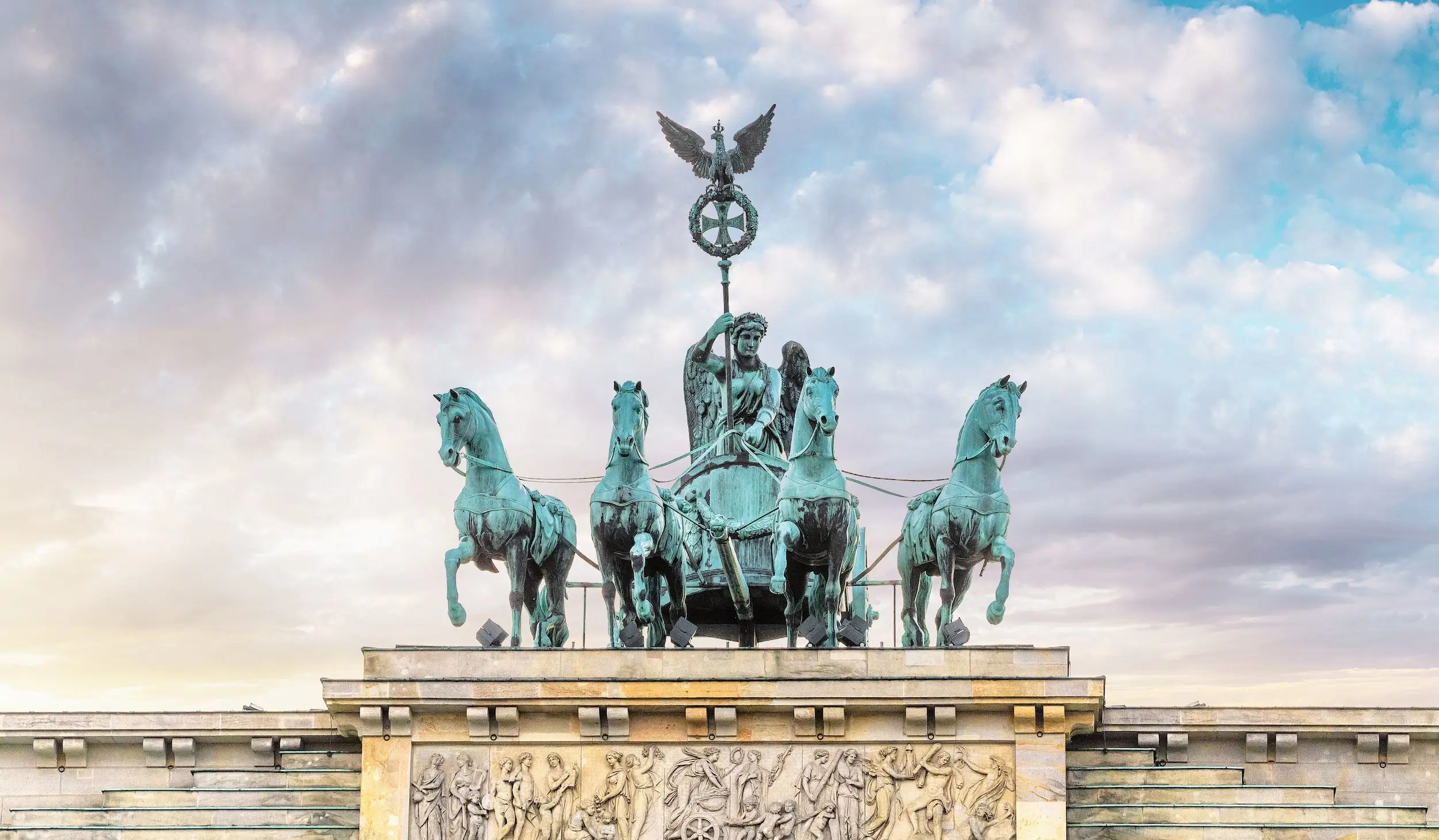
Brandenburg Gate
 Highlight of Guided Walking Tour of Berlin
Highlight of Guided Walking Tour of BerlinQuadriga. Hey, There's a Word to Know When Learning About this Historic Gate
The Brandenburg Gate was built as a symbol of peace, perverted into a symbol of power by the Nazis, and became a symbol of division during the Cold War. Now, however, it is a symbol of reunification. Completed in 1791, it was topped by the quadriga, a chariot drawn by four horses driven by the goddess of peace. Napoleon seized the quadriga as a spoil of war, but after his defeat, it was returned to the city and met by cheering crowds along the way, transforming the goddess of peace into a goddess of victory, holding a Germanic cross.

Reichstag
 Highlight of Guided Walking Tour of Berlin
Highlight of Guided Walking Tour of BerlinMake your way to the top of the dome enjoying amazing views and looking down at debating members of the German Parliament below.
Officially, the Reichstag is actually the Bundestag, which means the federal parliament. The Reichstag was reduced to a ruined shell by arson in 1933 and by World War II fighting, but it was rebuilt with a striking egg-shaped glass dome. Visitors are given a free audio guide that discusses the building’s history and architecture, while also orientating you to the sites of Berlin. It is an excellent introduction to the city. Note that it is usually necessary to book well in advance!

Brandenburg Gate
 Highlight of Guided Walking Tour of Berlin
Highlight of Guided Walking Tour of BerlinQuadriga. Hey, There's a Word to Know When Learning About this Historic Gate
The Brandenburg Gate was built as a symbol of peace, perverted into a symbol of power by the Nazis, and became a symbol of division during the Cold War. Now, however, it is a symbol of reunification. Completed in 1791, it was topped by the quadriga, a chariot drawn by four horses driven by the goddess of peace. Napoleon seized the quadriga as a spoil of war, but after his defeat, it was returned to the city and met by cheering crowds along the way, transforming the goddess of peace into a goddess of victory, holding a Germanic cross.

Reichstag
 Highlight of Guided Walking Tour of Berlin
Highlight of Guided Walking Tour of BerlinMake your way to the top of the dome enjoying amazing views and looking down at debating members of the German Parliament below.
Officially, the Reichstag is actually the Bundestag, which means the federal parliament. The Reichstag was reduced to a ruined shell by arson in 1933 and by World War II fighting, but it was rebuilt with a striking egg-shaped glass dome. Visitors are given a free audio guide that discusses the building’s history and architecture, while also orientating you to the sites of Berlin. It is an excellent introduction to the city. Note that it is usually necessary to book well in advance!

Brandenburg Gate
 Highlight of Guided Walking Tour of Berlin
Highlight of Guided Walking Tour of BerlinQuadriga. Hey, There's a Word to Know When Learning About this Historic Gate
The Brandenburg Gate was built as a symbol of peace, perverted into a symbol of power by the Nazis, and became a symbol of division during the Cold War. Now, however, it is a symbol of reunification. Completed in 1791, it was topped by the quadriga, a chariot drawn by four horses driven by the goddess of peace. Napoleon seized the quadriga as a spoil of war, but after his defeat, it was returned to the city and met by cheering crowds along the way, transforming the goddess of peace into a goddess of victory, holding a Germanic cross.

Reichstag
 Highlight of Guided Walking Tour of Berlin
Highlight of Guided Walking Tour of BerlinMake your way to the top of the dome enjoying amazing views and looking down at debating members of the German Parliament below.
Officially, the Reichstag is actually the Bundestag, which means the federal parliament. The Reichstag was reduced to a ruined shell by arson in 1933 and by World War II fighting, but it was rebuilt with a striking egg-shaped glass dome. Visitors are given a free audio guide that discusses the building’s history and architecture, while also orientating you to the sites of Berlin. It is an excellent introduction to the city. Note that it is usually necessary to book well in advance!
prev
next


Day 3
Berlin to Prague
Day 3
Berlin to Prague





Early Morning to Mid-Day
Charlottenburg Palace
Despite its many historic buildings, Berlin's modern architecture, constant construction, and hipness often make it feel like a thoroughly 21st century city. It is nice, therefore, to escape the bustle of the city by visiting the beautiful palace of Charlottenburg and its idyllic park and gardens. Constructed in 1696, the palace was nearly completely destroyed in World War II, but was lovingly restored to its baroque grandeur.

Museum Berggruen
Check out some Picasso paintings in this museum located on the tree-lined boulevard just opposite the palace entrance.
Show More

Charlottenburg Palace Park
Get pleasantly lost in the royal park surrounding the palace.
Show More

Charlottenburg Palace
Discover that German design isn't always sleek and efficient in this beautiful baroque palace built with its beautiful collections of art and furnishings.
Show More

Museum Berggruen
Check out some Picasso paintings in this museum located on the tree-lined boulevard just opposite the palace entrance.
Show More

Charlottenburg Palace Park
Get pleasantly lost in the royal park surrounding the palace.
Show More

Charlottenburg Palace
Discover that German design isn't always sleek and efficient in this beautiful baroque palace built with its beautiful collections of art and furnishings.
Show More

Museum Berggruen
Check out some Picasso paintings in this museum located on the tree-lined boulevard just opposite the palace entrance.
Show More
prev
next

Day 3
Berlin to Prague

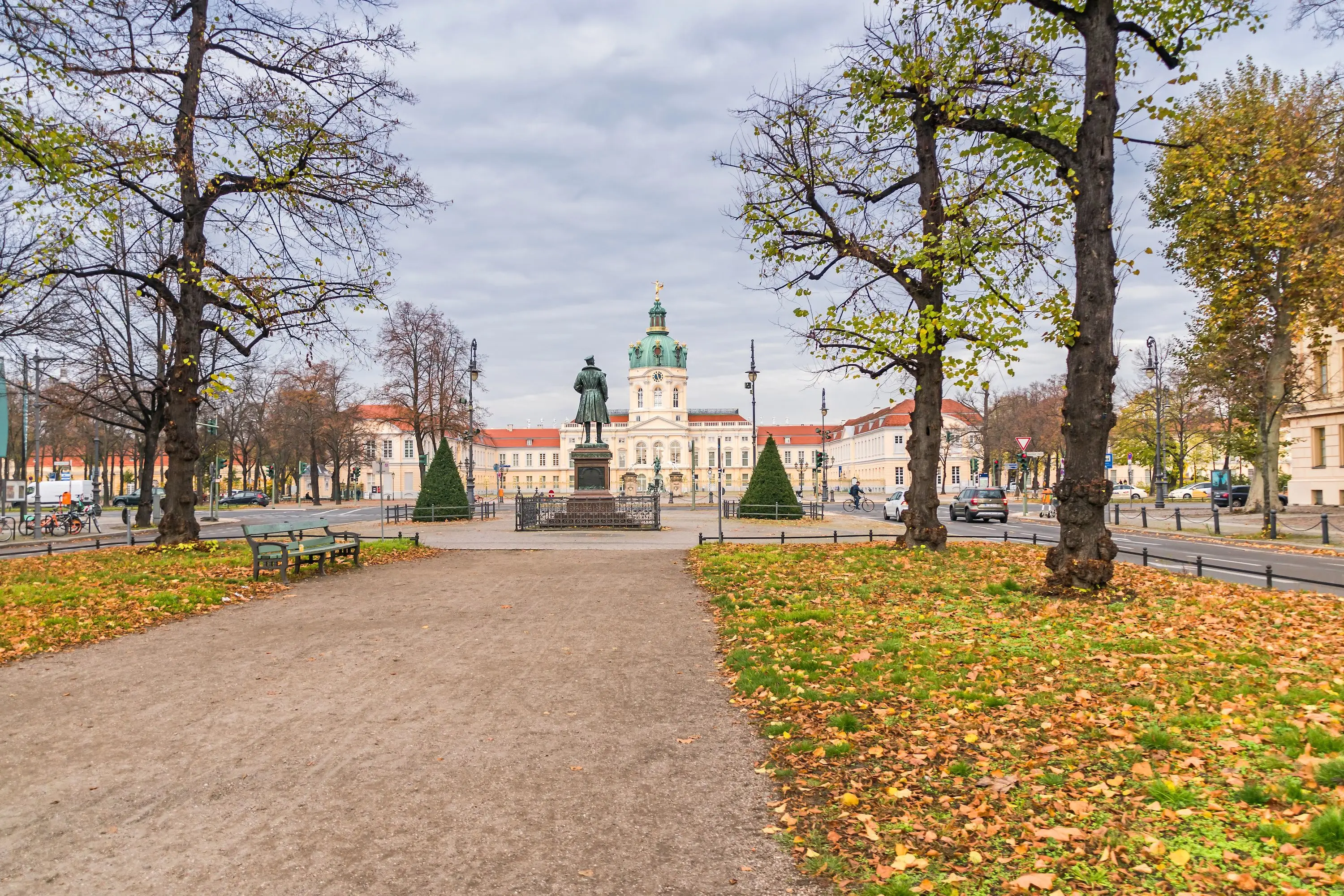
Museum Berggruen
 Highlight of Charlottenburg Palace
Highlight of Charlottenburg PalaceCheck out some Picasso paintings in this museum located on the tree-lined boulevard just opposite the palace entrance.
The musem holds a collection of rarely seen Picasso paintings, as well as other notable artwork, including some Cezannes, van Goghs and Klees. There are several other worthwhile museums, as well as cafes and beautiful villas all located nearby on the street known as Schloßtraße.
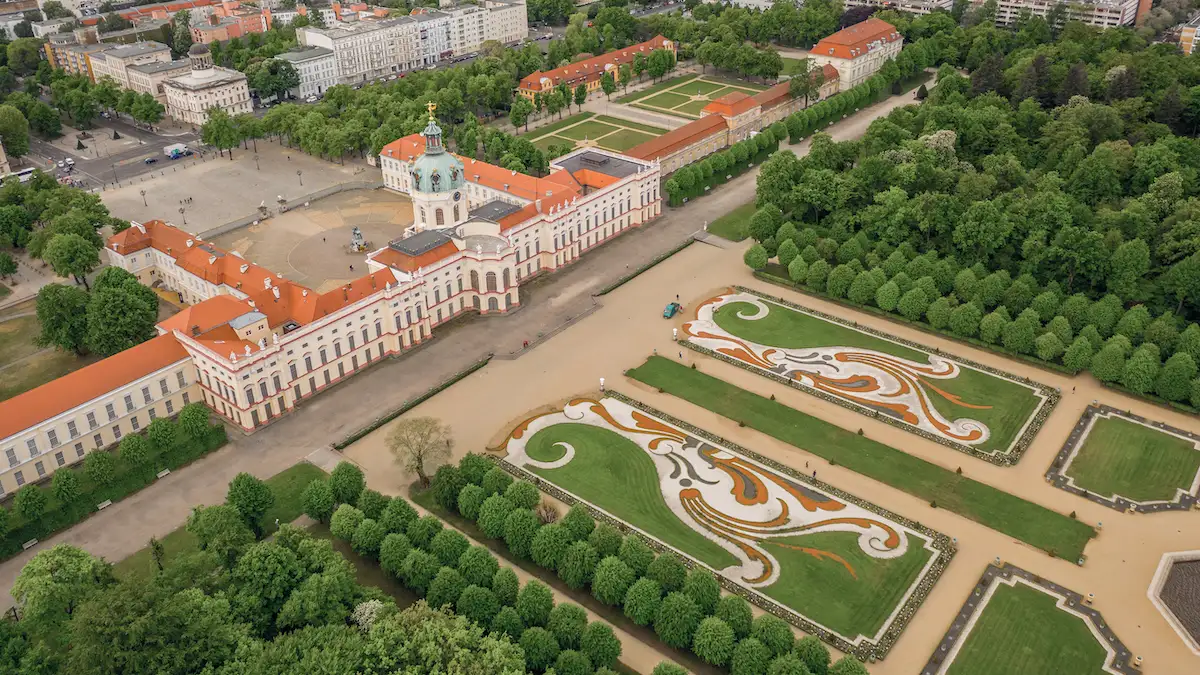
Charlottenburg Palace Park
 Highlight of Charlottenburg Palace
Highlight of Charlottenburg PalaceGet pleasantly lost in the royal park surrounding the palace.
The elegant formal Baroque garden directly adjacent to the palace has been restored to its original layout from the 1700's, complete with ornate fountains featuring replica antique sculptures. Beyond the gardens, you will find a delightfully relaxing forested park, which is criss-crossed by gravel paths and interspersed with canals and other waterways. It is a delight to explore either on foot or bicycle.
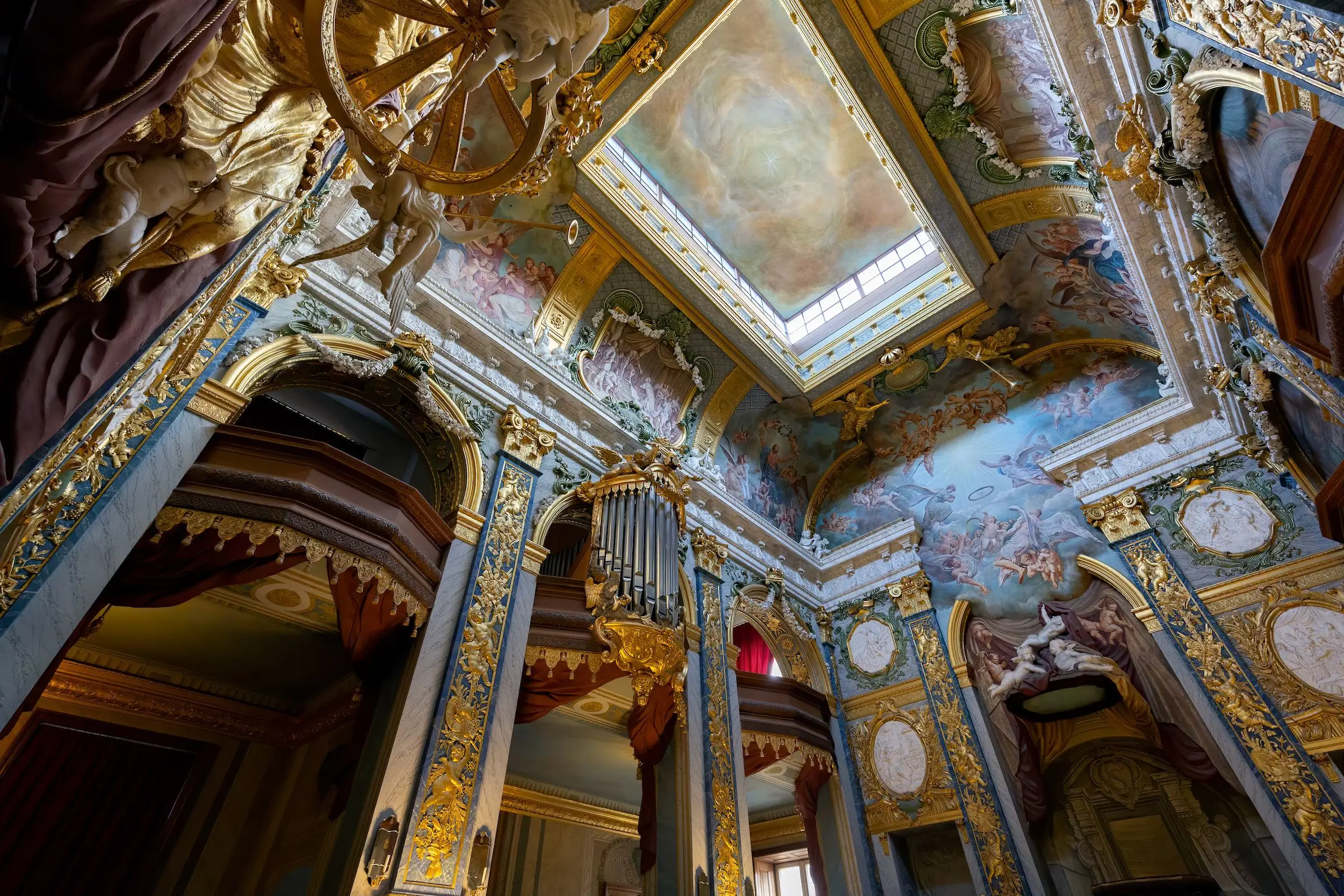
Charlottenburg Palace
 Highlight of Charlottenburg Palace
Highlight of Charlottenburg PalaceDiscover that German design isn't always sleek and efficient in this beautiful baroque palace built with its beautiful collections of art and furnishings.
Originally a modest summer retreat, it grew into an exquisite baroque edifice with opulent private apartments, richly festooned festival halls, collections of precious porcelain and paintings by French 18th-century masters. Especially fascinating is the Porzellankabinett, a room with walls lined from top to bottom by fine Japanese and Chinese porcelain.

Museum Berggruen
 Highlight of Charlottenburg Palace
Highlight of Charlottenburg PalaceCheck out some Picasso paintings in this museum located on the tree-lined boulevard just opposite the palace entrance.
The musem holds a collection of rarely seen Picasso paintings, as well as other notable artwork, including some Cezannes, van Goghs and Klees. There are several other worthwhile museums, as well as cafes and beautiful villas all located nearby on the street known as Schloßtraße.

Charlottenburg Palace Park
 Highlight of Charlottenburg Palace
Highlight of Charlottenburg PalaceGet pleasantly lost in the royal park surrounding the palace.
The elegant formal Baroque garden directly adjacent to the palace has been restored to its original layout from the 1700's, complete with ornate fountains featuring replica antique sculptures. Beyond the gardens, you will find a delightfully relaxing forested park, which is criss-crossed by gravel paths and interspersed with canals and other waterways. It is a delight to explore either on foot or bicycle.

Charlottenburg Palace
 Highlight of Charlottenburg Palace
Highlight of Charlottenburg PalaceDiscover that German design isn't always sleek and efficient in this beautiful baroque palace built with its beautiful collections of art and furnishings.
Originally a modest summer retreat, it grew into an exquisite baroque edifice with opulent private apartments, richly festooned festival halls, collections of precious porcelain and paintings by French 18th-century masters. Especially fascinating is the Porzellankabinett, a room with walls lined from top to bottom by fine Japanese and Chinese porcelain.

Museum Berggruen
 Highlight of Charlottenburg Palace
Highlight of Charlottenburg PalaceCheck out some Picasso paintings in this museum located on the tree-lined boulevard just opposite the palace entrance.
The musem holds a collection of rarely seen Picasso paintings, as well as other notable artwork, including some Cezannes, van Goghs and Klees. There are several other worthwhile museums, as well as cafes and beautiful villas all located nearby on the street known as Schloßtraße.
prev
next


Day 4
Prague
Day 4
Prague





9:00 AM - 12:30 PM
Royal Route Guided Tour
On this charming guided walk, you will explore the Prague Castle, the largest castle complex in all of Europe. To reach the castle you will trace the Royal Coronation Route and cross the Charles Bridge, whose “speaking stones” reveal the amazing and often cruel history that occurred there. Your tour guide will then take you either through the castle courtyards and into the dramatic St. Vitus Cathedral in the center of the castle complex, or through the upper part of the castle district around the oversized palaces of the old Catholic nobility and the top of the Castle Steps for incomparable views over the red rooftops of the Little Quarter.

Charles Bridge
Cross the river dividing Prague's most historic neighborhoods, and experience one of Europe's most iconic landmarks.
Show More

Maltese Square & Lennon Wall
See a historic wall that has been covered in John Lennon-inspired graffiti since Communist days.
Show More

Prague Castle
Prague Castle is one of the main attractions in Prague and is also the largest castle complex in the world.
Show More

Charles Bridge
Cross the river dividing Prague's most historic neighborhoods, and experience one of Europe's most iconic landmarks.
Show More

Maltese Square & Lennon Wall
See a historic wall that has been covered in John Lennon-inspired graffiti since Communist days.
Show More

Prague Castle
Prague Castle is one of the main attractions in Prague and is also the largest castle complex in the world.
Show More

Charles Bridge
Cross the river dividing Prague's most historic neighborhoods, and experience one of Europe's most iconic landmarks.
Show More
prev
next

Day 4
Prague

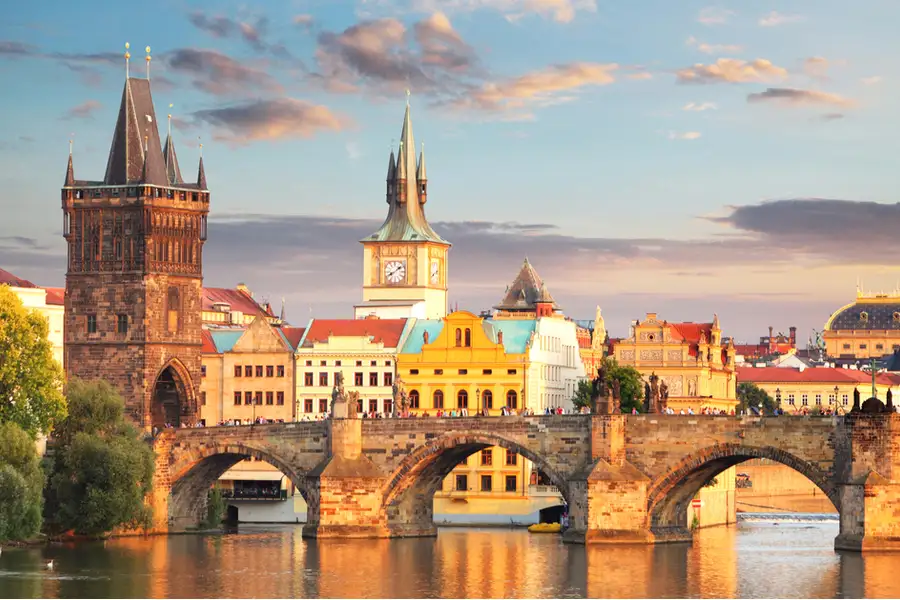
Charles Bridge
 Highlight of Royal Route Guided Tour
Highlight of Royal Route Guided TourCross the river dividing Prague's most historic neighborhoods, and experience one of Europe's most iconic landmarks.
Bridge construction began in 1357 under King Charles IV (hence the name), and it was the only bridge across the Vltava River until 1841. 30 baroque statues of saints line the bridge, and it is filled with street artists and entertainers. Not to be missed.

Maltese Square & Lennon Wall
 Highlight of Royal Route Guided Tour
Highlight of Royal Route Guided TourSee a historic wall that has been covered in John Lennon-inspired graffiti since Communist days.
The wall has been covered in graffiti since the 1960s, and during Communism anti-regime sentiment was common. John Lennon's assassination inspired grafitti reflecting his song, Imagine, which earned the wall its current moniker. It is now a favorite gathering place for tourists, and musicians sometimes congregate there as well. Just around the corner is the Maltese Square, which is one of Prague's more quaint and relaxed public spaces, despite being just off the main tourist route.

Prague Castle
 Highlight of Royal Route Guided Tour
Highlight of Royal Route Guided TourPrague Castle is one of the main attractions in Prague and is also the largest castle complex in the world.
The Prague Castle is the largest castle complex in the world with structures dating back to the 9th century. The St Vitus Cathedral and Basilica of St George can be found within the castle walls. The Prague Castle also includes several gardens, palaces, and a monastery. This castle was the seat of power for the Kings of Bohemia, Holy Roman Emperors, and presidents of former Czechoslovakia. Prague Castle is a UNESCO world heritage site and is one of the most visited places in the country.

Charles Bridge
 Highlight of Royal Route Guided Tour
Highlight of Royal Route Guided TourCross the river dividing Prague's most historic neighborhoods, and experience one of Europe's most iconic landmarks.
Bridge construction began in 1357 under King Charles IV (hence the name), and it was the only bridge across the Vltava River until 1841. 30 baroque statues of saints line the bridge, and it is filled with street artists and entertainers. Not to be missed.

Maltese Square & Lennon Wall
 Highlight of Royal Route Guided Tour
Highlight of Royal Route Guided TourSee a historic wall that has been covered in John Lennon-inspired graffiti since Communist days.
The wall has been covered in graffiti since the 1960s, and during Communism anti-regime sentiment was common. John Lennon's assassination inspired grafitti reflecting his song, Imagine, which earned the wall its current moniker. It is now a favorite gathering place for tourists, and musicians sometimes congregate there as well. Just around the corner is the Maltese Square, which is one of Prague's more quaint and relaxed public spaces, despite being just off the main tourist route.

Prague Castle
 Highlight of Royal Route Guided Tour
Highlight of Royal Route Guided TourPrague Castle is one of the main attractions in Prague and is also the largest castle complex in the world.
The Prague Castle is the largest castle complex in the world with structures dating back to the 9th century. The St Vitus Cathedral and Basilica of St George can be found within the castle walls. The Prague Castle also includes several gardens, palaces, and a monastery. This castle was the seat of power for the Kings of Bohemia, Holy Roman Emperors, and presidents of former Czechoslovakia. Prague Castle is a UNESCO world heritage site and is one of the most visited places in the country.

Charles Bridge
 Highlight of Royal Route Guided Tour
Highlight of Royal Route Guided TourCross the river dividing Prague's most historic neighborhoods, and experience one of Europe's most iconic landmarks.
Bridge construction began in 1357 under King Charles IV (hence the name), and it was the only bridge across the Vltava River until 1841. 30 baroque statues of saints line the bridge, and it is filled with street artists and entertainers. Not to be missed.
prev
next

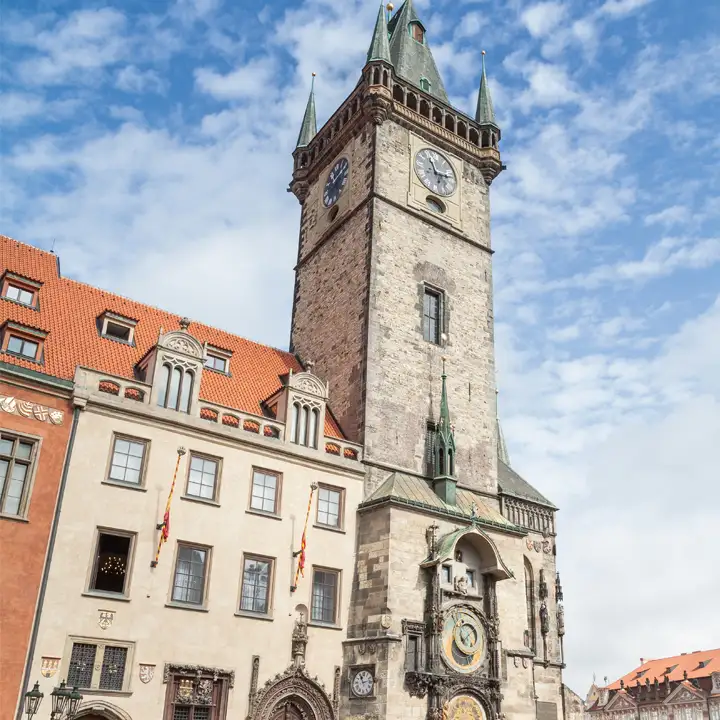
Day 5
Prague
Day 5
Prague




Morning/Mid-Day
Old Town
A visit to the Old Town transports you to an entirely different era. A labyrinth of twisting cobblestone lanes and alleys surrounds Old Town Square, which has been Prague's municipal center since the Middle Ages. The square is lined by magnificent churches and imposing Renaissance palaces. As you wander through the Old Town, you discover numerous other delights, including several beautiful churches, a plentiful supply of cozy cafes and pubs, and an outdoor market dating back to the Middle Ages.

Church of Our Lady before Týn
Count the spires on the Church of Our Lady Týn before discovering the hidden courtyard behind it.
Show More

Clementinum
Discover a large historical complex of buildings and courtyards "hidden in plain sight" within the Old Town.
Show More

Old Town Square
Make sure to visit one of Europe's most important, historic, and stunning city squares.
Show More

Old Town Hall and Astronomical Clock
See Prague's most photographed moment when the late medieval timepiece constructed on the side of the Old Town Hall Tower comes to life at the top of the hour.
Show More

Church of Our Lady before Týn
Count the spires on the Church of Our Lady Týn before discovering the hidden courtyard behind it.
Show More

Clementinum
Discover a large historical complex of buildings and courtyards "hidden in plain sight" within the Old Town.
Show More

Old Town Square
Make sure to visit one of Europe's most important, historic, and stunning city squares.
Show More

Old Town Hall and Astronomical Clock
See Prague's most photographed moment when the late medieval timepiece constructed on the side of the Old Town Hall Tower comes to life at the top of the hour.
Show More
prev
next

Day 5
Prague


Church of Our Lady before Týn
 Highlight of Old Town
Highlight of Old TownCount the spires on the Church of Our Lady Týn before discovering the hidden courtyard behind it.
The 14th-century, Gothic church is a stunning structure with asymmetrical towers (note that the one on the right is slightly larger than the one on the left). It is the dominant feature of Old Town square and serves as an extensive gallery of Gothic, Renaissance and Early Baroque works. The church is the final resting place for the great astronomer Tycho Brahe.

Clementinum
 Highlight of Old Town
Highlight of Old TownDiscover a large historical complex of buildings and courtyards "hidden in plain sight" within the Old Town.
Founded as an abbey in the 11th century and later transformed into a Jesuit university, it is the second largest complex of buildings in Prague after the castle and contains four separate churches. Guided tours begin at 10am, and include an awe-inspiring Baroque library hall and the Astronomical Tower, from which you have a beautiful view of the Old Town.

Old Town Square
 Highlight of Old Town
Highlight of Old TownMake sure to visit one of Europe's most important, historic, and stunning city squares.
The square is filled with rich history and surrounded by many beautiful old buildings, such as the gothic church of Our Lady before Týn and the baroque church of St. Nicholas. At the center of the square is a large statue of Jan Hus, a church reformer burnt at the stake in 1415, and a lovely and recently-restored column topped by the Virgin Mary. Today the square is filled with street performers, food stalls, and horse-drawn carriages.

Old Town Hall and Astronomical Clock
 Highlight of Old Town
Highlight of Old TownSee Prague's most photographed moment when the late medieval timepiece constructed on the side of the Old Town Hall Tower comes to life at the top of the hour.
Apostles proceed from the tower’s 1410 astronomical clock hourly, flanked by figures representing vanity, greed, death, and pleasure. You can also take an elevator to the top of the Old Town Hall tower for a great view of the Old Town Square and rooftops. Tours of the town hall and its gothic cellars are also offered.

Church of Our Lady before Týn
 Highlight of Old Town
Highlight of Old TownCount the spires on the Church of Our Lady Týn before discovering the hidden courtyard behind it.
The 14th-century, Gothic church is a stunning structure with asymmetrical towers (note that the one on the right is slightly larger than the one on the left). It is the dominant feature of Old Town square and serves as an extensive gallery of Gothic, Renaissance and Early Baroque works. The church is the final resting place for the great astronomer Tycho Brahe.

Clementinum
 Highlight of Old Town
Highlight of Old TownDiscover a large historical complex of buildings and courtyards "hidden in plain sight" within the Old Town.
Founded as an abbey in the 11th century and later transformed into a Jesuit university, it is the second largest complex of buildings in Prague after the castle and contains four separate churches. Guided tours begin at 10am, and include an awe-inspiring Baroque library hall and the Astronomical Tower, from which you have a beautiful view of the Old Town.

Old Town Square
 Highlight of Old Town
Highlight of Old TownMake sure to visit one of Europe's most important, historic, and stunning city squares.
The square is filled with rich history and surrounded by many beautiful old buildings, such as the gothic church of Our Lady before Týn and the baroque church of St. Nicholas. At the center of the square is a large statue of Jan Hus, a church reformer burnt at the stake in 1415, and a lovely and recently-restored column topped by the Virgin Mary. Today the square is filled with street performers, food stalls, and horse-drawn carriages.

Old Town Hall and Astronomical Clock
 Highlight of Old Town
Highlight of Old TownSee Prague's most photographed moment when the late medieval timepiece constructed on the side of the Old Town Hall Tower comes to life at the top of the hour.
Apostles proceed from the tower’s 1410 astronomical clock hourly, flanked by figures representing vanity, greed, death, and pleasure. You can also take an elevator to the top of the Old Town Hall tower for a great view of the Old Town Square and rooftops. Tours of the town hall and its gothic cellars are also offered.
prev
next


Day 6
Prague to Vienna
Day 6
Prague to Vienna





Morning
Vyšehrad Fortress
The castle of Vyšehrad was the seat of Bohemia's kings from the 11th to the 12th centuries. Due to its strategic position on a hill overlooking the Vltava River and Prague, it became an important army garrison in the 17th century, and it was transformed into a fortress with huge walls, gates, and ramparts. Walking along these ramparts will offer you wonderful views of the city and river. The interior of the fortress is now given over to a pleasant and quiet park which is a favorite of locals.

Vyšehrad Cemetery
Wander in a graveyard where many prominent Czechs are buried, such as famed composers Dvořák & Smětana.
Show More

Fortress Walls Viewpoint
Enjoy stunning city views from atop the fortress walls.
Show More

Brick Gate and Casemates
Venture within the fortress's massive 17th-century walls and gates.
Show More

Vyšehrad Cemetery
Wander in a graveyard where many prominent Czechs are buried, such as famed composers Dvořák & Smětana.
Show More

Fortress Walls Viewpoint
Enjoy stunning city views from atop the fortress walls.
Show More

Brick Gate and Casemates
Venture within the fortress's massive 17th-century walls and gates.
Show More

Vyšehrad Cemetery
Wander in a graveyard where many prominent Czechs are buried, such as famed composers Dvořák & Smětana.
Show More
prev
next

Day 6
Prague to Vienna

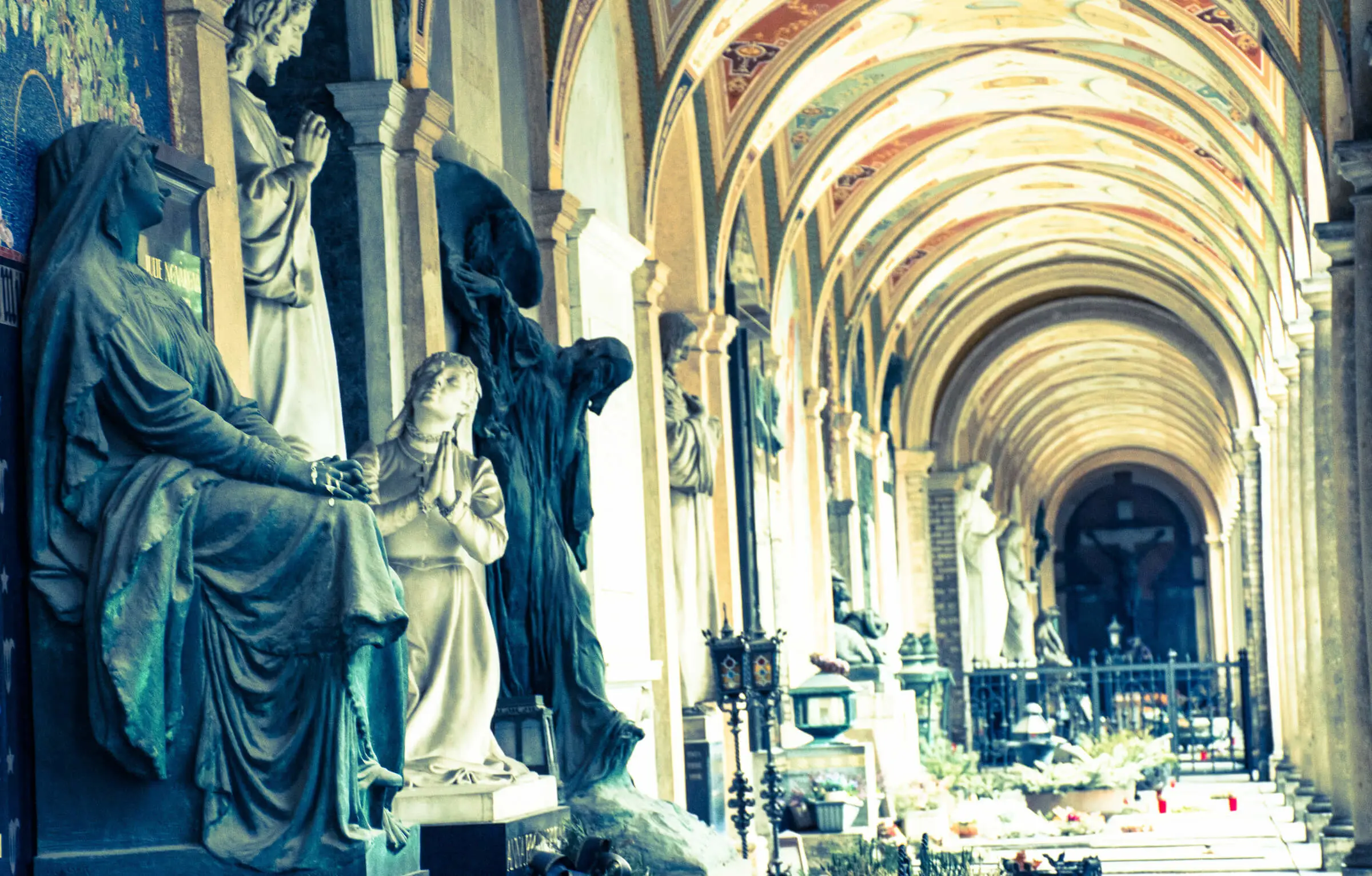
Vyšehrad Cemetery
 Highlight of Vyšehrad Fortress
Highlight of Vyšehrad FortressWander in a graveyard where many prominent Czechs are buried, such as famed composers Dvořák & Smětana.
The cemetery is filled with many tombs which are works of art in themselves, including several arcades with beautiful art-nouveau frescoes. The monumental Slavin tomb is a sort of pantheon of the Czech people, with over 55 prominent persons buried within it. Dvořák and Smětana have their own more modest graves.

Fortress Walls Viewpoint
 Highlight of Vyšehrad Fortress
Highlight of Vyšehrad FortressEnjoy stunning city views from atop the fortress walls.
Prague Castle and most of the city can be seen from above the cavernous Gorlice Hall. A walk along the fortress walls is a delightful experience, as you will enjoy numerous excellent vantage points on all sides of the fortress, enjoying Prague from a different perspective without all the crowds.
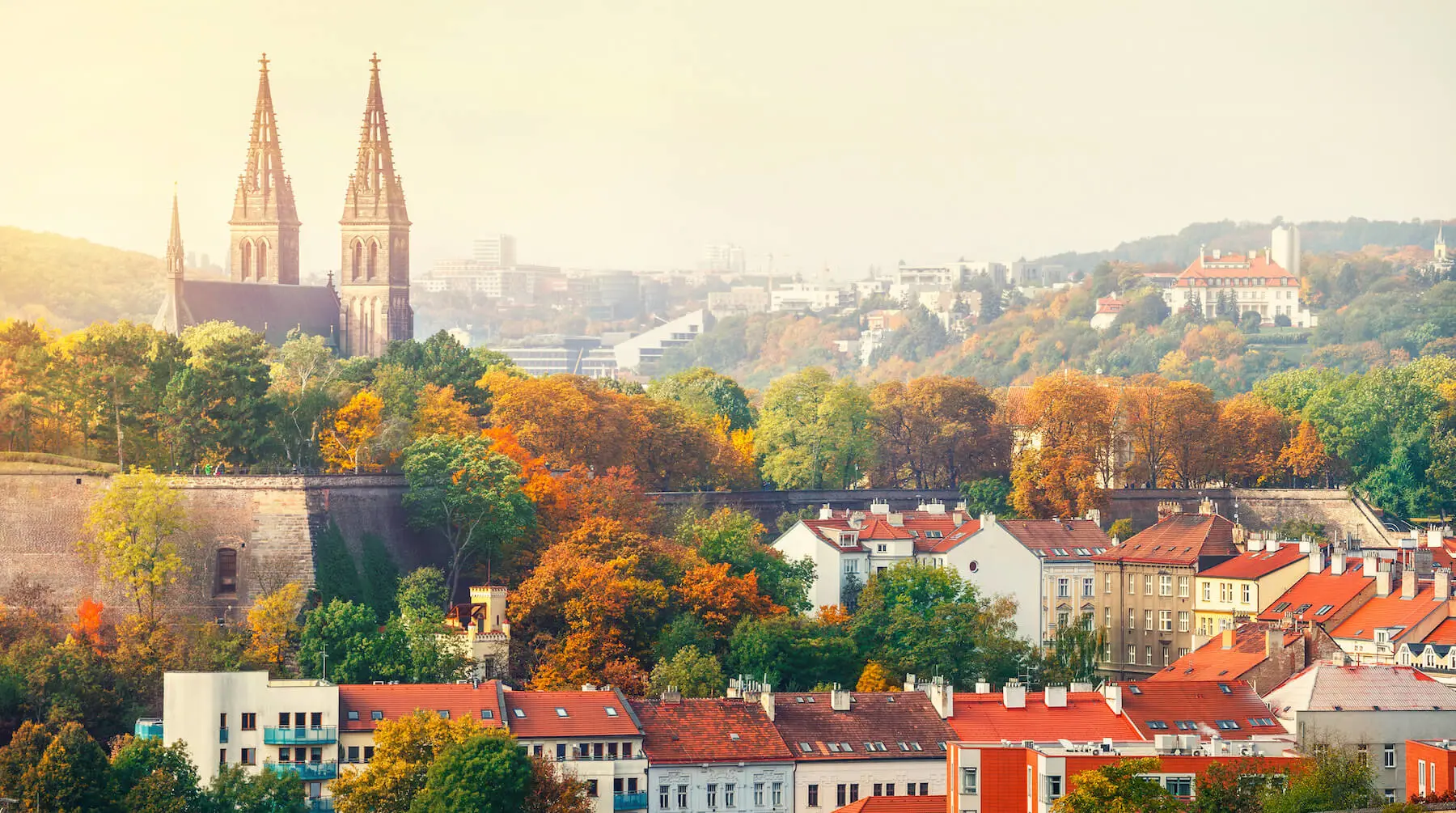
Brick Gate and Casemates
 Highlight of Vyšehrad Fortress
Highlight of Vyšehrad FortressVenture within the fortress's massive 17th-century walls and gates.
A tour through the Brick Gate on the fortress's north side will take you through the narrow underground passageways and casemates of the fortress. You will see a historical exhibit on Vyšehrad as well as the underground Gorlice Hall, where the original statues from the Charles Bridge are stored for safe-keeping (many of the statues on the bridge are copies).

Vyšehrad Cemetery
 Highlight of Vyšehrad Fortress
Highlight of Vyšehrad FortressWander in a graveyard where many prominent Czechs are buried, such as famed composers Dvořák & Smětana.
The cemetery is filled with many tombs which are works of art in themselves, including several arcades with beautiful art-nouveau frescoes. The monumental Slavin tomb is a sort of pantheon of the Czech people, with over 55 prominent persons buried within it. Dvořák and Smětana have their own more modest graves.

Fortress Walls Viewpoint
 Highlight of Vyšehrad Fortress
Highlight of Vyšehrad FortressEnjoy stunning city views from atop the fortress walls.
Prague Castle and most of the city can be seen from above the cavernous Gorlice Hall. A walk along the fortress walls is a delightful experience, as you will enjoy numerous excellent vantage points on all sides of the fortress, enjoying Prague from a different perspective without all the crowds.

Brick Gate and Casemates
 Highlight of Vyšehrad Fortress
Highlight of Vyšehrad FortressVenture within the fortress's massive 17th-century walls and gates.
A tour through the Brick Gate on the fortress's north side will take you through the narrow underground passageways and casemates of the fortress. You will see a historical exhibit on Vyšehrad as well as the underground Gorlice Hall, where the original statues from the Charles Bridge are stored for safe-keeping (many of the statues on the bridge are copies).

Vyšehrad Cemetery
 Highlight of Vyšehrad Fortress
Highlight of Vyšehrad FortressWander in a graveyard where many prominent Czechs are buried, such as famed composers Dvořák & Smětana.
The cemetery is filled with many tombs which are works of art in themselves, including several arcades with beautiful art-nouveau frescoes. The monumental Slavin tomb is a sort of pantheon of the Czech people, with over 55 prominent persons buried within it. Dvořák and Smětana have their own more modest graves.
prev
next


Day 7
Vienna
Day 7
Vienna




9:00 AM - 11:30 AM
Guided Walk of the Inner City
This tour takes you back in history to explore the Vienna that stood within the old city walls. You will learn about the humble beginnings of Vienna before it became the capital of a great empire and one of the most important cities in Europe. You will discover how Vienna's early inhabitants lived and how they left their mark on the city and its beautiful Medieval, Renaissance, and Baroque architecture.

Day 7
Vienna


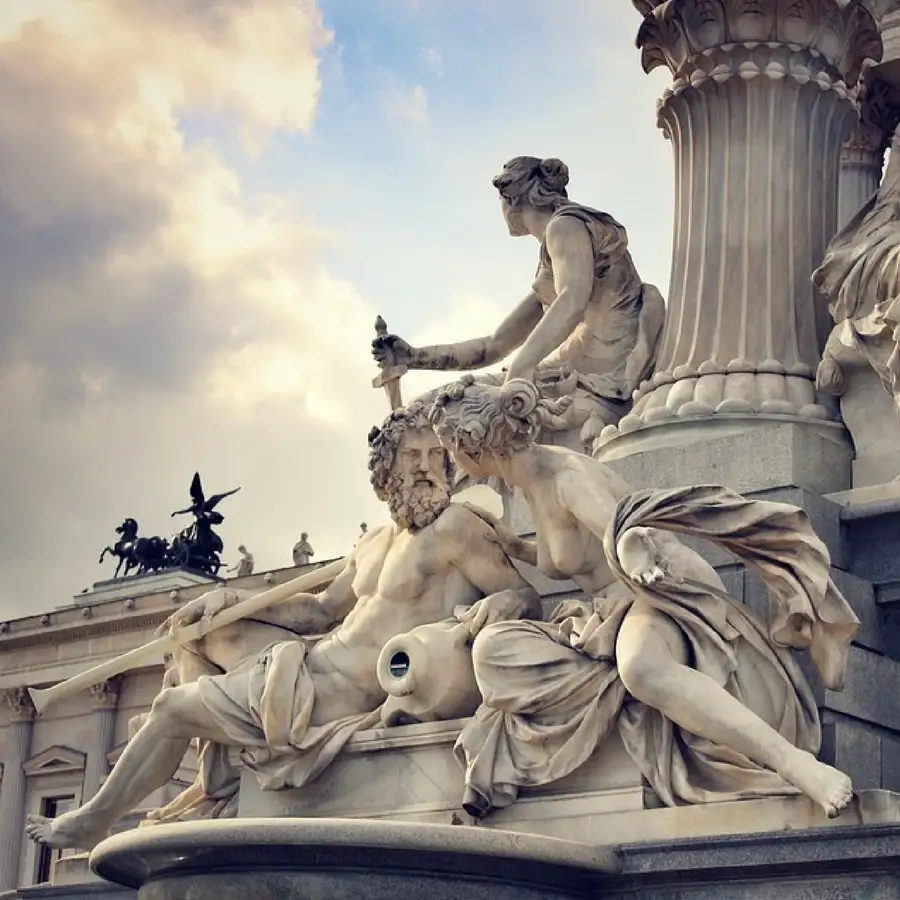
Day 8
Vienna
Day 8
Vienna




Morning/Mid-Day
Schönbrunn Palace
The magnificent Baroque palace of Schönbrunn is most famously associated with Empress Maria Theresa, who lived here surrounded by 16 little archdukes and duchesses who also happened to be her children. On your tour of the palace, you will see how Maria Theresa and other past imperial residents lived. During the Christmas season, no visit is complete without exploring the wonderful Christmas Market in the palace forecourt.

Schönbrunn Zoo
Join local families enjoying one of Europe's best zoos.
Show More

Schönbrunn Gardens
Get lost in the huge imperial gardens.
Show More

Schönbrunn Zoo
Join local families enjoying one of Europe's best zoos.
Show More

Schönbrunn Gardens
Get lost in the huge imperial gardens.
Show More

Schönbrunn Zoo
Join local families enjoying one of Europe's best zoos.
Show More

Schönbrunn Gardens
Get lost in the huge imperial gardens.
Show More
prev
next

Day 8
Vienna


Schönbrunn Zoo
 Highlight of Schönbrunn Palace
Highlight of Schönbrunn PalaceJoin local families enjoying one of Europe's best zoos.
With an entrance directly connected to the Schönbrunn palace gardens, visiting the zoo can be a great addition to any trip to the palace. Founded as an imperial menagerie in 1752, it is the oldest continually operated zoo in the world, and today is home to many rare species such as giant pandas.
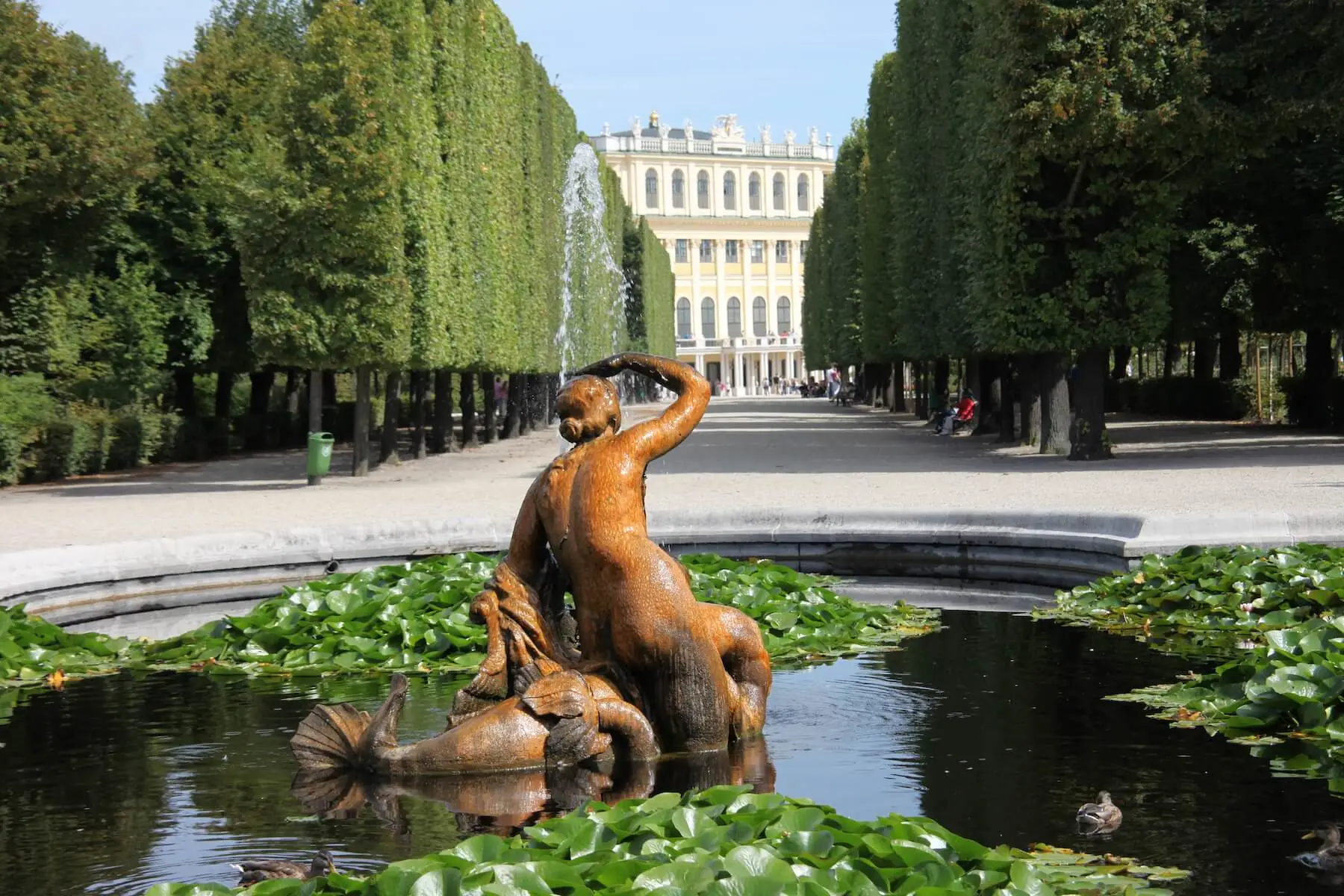
Schönbrunn Gardens
 Highlight of Schönbrunn Palace
Highlight of Schönbrunn PalaceGet lost in the huge imperial gardens.
The beautiful park is a mix of formal gardens and woodlands, and is dotted with enchanting statues & fountains, including a massive fountain of Neptune. The Gloriette pavilion sits on a rise opposite the palace and commands a wonderful view. Kids will love the labyrinth, racing to find the tower at the center of the maze.

Schönbrunn Zoo
 Highlight of Schönbrunn Palace
Highlight of Schönbrunn PalaceJoin local families enjoying one of Europe's best zoos.
With an entrance directly connected to the Schönbrunn palace gardens, visiting the zoo can be a great addition to any trip to the palace. Founded as an imperial menagerie in 1752, it is the oldest continually operated zoo in the world, and today is home to many rare species such as giant pandas.

Schönbrunn Gardens
 Highlight of Schönbrunn Palace
Highlight of Schönbrunn PalaceGet lost in the huge imperial gardens.
The beautiful park is a mix of formal gardens and woodlands, and is dotted with enchanting statues & fountains, including a massive fountain of Neptune. The Gloriette pavilion sits on a rise opposite the palace and commands a wonderful view. Kids will love the labyrinth, racing to find the tower at the center of the maze.

Schönbrunn Zoo
 Highlight of Schönbrunn Palace
Highlight of Schönbrunn PalaceJoin local families enjoying one of Europe's best zoos.
With an entrance directly connected to the Schönbrunn palace gardens, visiting the zoo can be a great addition to any trip to the palace. Founded as an imperial menagerie in 1752, it is the oldest continually operated zoo in the world, and today is home to many rare species such as giant pandas.

Schönbrunn Gardens
 Highlight of Schönbrunn Palace
Highlight of Schönbrunn PalaceGet lost in the huge imperial gardens.
The beautiful park is a mix of formal gardens and woodlands, and is dotted with enchanting statues & fountains, including a massive fountain of Neptune. The Gloriette pavilion sits on a rise opposite the palace and commands a wonderful view. Kids will love the labyrinth, racing to find the tower at the center of the maze.
prev
next


Day 9
Vienna to Munich
Day 9
Vienna to Munich






7:30 AM
Taxi Transfer to Rail Station
Most trains depart from Vienna Main Station (Wien Hbf) station. If traveling to the west though, there is a good possibility you will leave from the west station (Wien Westbahnhof). Before spending money on a transfer, be sure to check whether your hotel is within easy walking distance. Also consider that public transport is the cheapest and sometimes fastest option. If staying at a hotel, they can order a reliable taxi. Some private transfers will even help with your bags. Uber is also available for those with the app.

Day 9
Vienna to Munich



Day 10
Munich
Day 10
Munich




Morning
Deutsches Museum
The Deutsches Museum (i.e., the German Museum) is the world's largest museum of science and technology. It is located on a small island in the River Isar, which flows through central Munich. The museum's vast and fascinating collection is spread out among 40 different exhibitions. You will encounter examples of technology stretching across humanity's long history, from a reproduction of pre-historic cave paintings to the laboratory where the atom was split.

Day 10
Munich


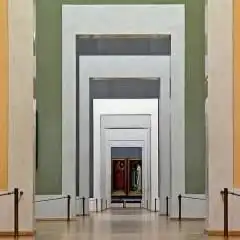
Day 11
Munich
Day 11
Munich



Morning/Mid-Day
Arts District
Munich's Museum Quarter (Kunstareal) has grown continuously over a period of 200 years offering an extraordinary variety of museums with works from Pharaonic Egypt right through to the present day. There are 18 museums and exhibition halls, more than 40 galleries, six internationally renowned universities and numerous cultural institutions all in close proximity and within walking distance of each other.

Pinakothek der Moderne
Peruse 19th and 20th century art in a stylishly modern setting.
Show More

Museum Brandhorst
Peruse modern art in this remarkably different building.
Show More

State Museum of Egyptian Art
History buffs will love this underappreciated museum dedicated to Egyptian archaeology.
Show More

Alte Pinakothek
Enjoy a tremendous collection of art in what was once the world's largest art gallery.
Show More

Neue Pinakothek
See some of the 19th and early 20th centuries' greatest artworks.
Show More

Pinakothek der Moderne
Peruse 19th and 20th century art in a stylishly modern setting.
Show More

Museum Brandhorst
Peruse modern art in this remarkably different building.
Show More

State Museum of Egyptian Art
History buffs will love this underappreciated museum dedicated to Egyptian archaeology.
Show More

Alte Pinakothek
Enjoy a tremendous collection of art in what was once the world's largest art gallery.
Show More

Neue Pinakothek
See some of the 19th and early 20th centuries' greatest artworks.
Show More

Pinakothek der Moderne
Peruse 19th and 20th century art in a stylishly modern setting.
Show More
prev
next

Day 11
Munich


Pinakothek der Moderne
 Highlight of Arts District
Highlight of Arts DistrictPeruse 19th and 20th century art in a stylishly modern setting.
The strikingly clean-lined Pinakothek der Moderne, gathers its eclectic collection of classic modern and contemporary art, design and architecture around a central rotunda. On the west side of the building are works representing last century's key artistic movements, from Cubism through to Surrealism and beyond. The east wing is devoted to contemporary art.

Museum Brandhorst
 Highlight of Arts District
Highlight of Arts DistrictPeruse modern art in this remarkably different building.
The Museum Brandhorst is an eye-catching structure covered with 36,000 polychromatic ceramic rods in 23 custom colors and a second layer consisting of a horizontally folded metal skin, coated in two colors. This layering and its polychromy lend the skin a varied appearance: What is vivid and three-dimensional from close up appears homogeneous and flat from afar. It was opened in 2009 to house a collection of German and modern art in a setting of restrained, spacious modernism. Its rotating exhibits include works by Andy Warhol, Jeff Koons, and Picasso, as well as major contemporary German artists.

State Museum of Egyptian Art
 Highlight of Arts District
Highlight of Arts DistrictHistory buffs will love this underappreciated museum dedicated to Egyptian archaeology.
The impressive entrance to the brand spanking new State Museum of Egyptian Art is reminiscent of a grand descent into a Pharoah's tomb. Opened in 2013 to house artifacts formerly contained in the Residenz, the museum has a collection which spans 5000 years of Egyptian history.

Alte Pinakothek
 Highlight of Arts District
Highlight of Arts DistrictEnjoy a tremendous collection of art in what was once the world's largest art gallery.
The largest art gallery in the world when it was first opened in 1836, the Alte Pinakothek can still be an overwhelming experience: the collections, which are based on the royal collection of the Wittelsbach dynasty over five hundred years, are arranged geographically and chronologically, encompassing German, Dutch, Flemish, Spanish, French and Italian art, with a timespan from the Middle Ages to the 18th century. It houses the largest collection of Rubens in the world, so be sure to stop by the Flemish paintings. Also worthy of particular attention if you're short on time are the richly comic works by Pieter Brueghel in the Netherlandish collection, and the German late Gothic and Renaissance art collection represented by the likes of Albrecht Dürer and Cranach the Elder.
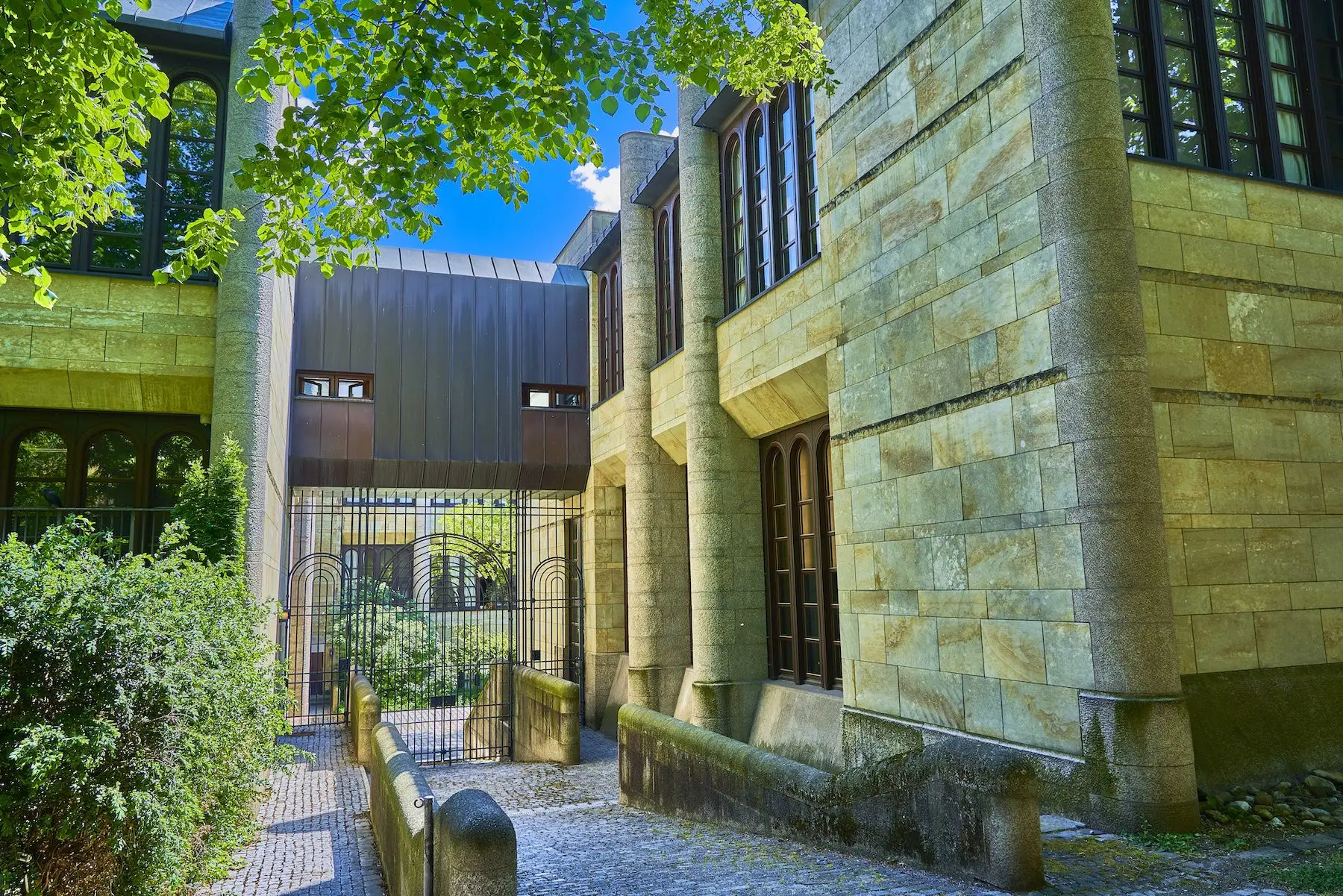
Neue Pinakothek
 Highlight of Arts District
Highlight of Arts DistrictSee some of the 19th and early 20th centuries' greatest artworks.
Directly across the road from Alte Pinakothek, the Neue Pinakothek picks up where the older museum leaves off, concentrating on art from the 19th century to Jugendstil. The audio-guide tour starts with art from around 1800, prominent among which are a number of canvases by Goya, before progressing to English painting from the likes of Gainsborough, Constable, and Turner. Much of the rest of the museum is given over to German Art, with an emphasis on artists active in the court of Ludwig I, such as work by the architect who designed the Alte Pinakothek, Leo von Klenze, and the Berlin architect Karl Friedrich Schinkel. There are also works by Caspar David Friedrich and Adolph von Menzel.

Pinakothek der Moderne
 Highlight of Arts District
Highlight of Arts DistrictPeruse 19th and 20th century art in a stylishly modern setting.
The strikingly clean-lined Pinakothek der Moderne, gathers its eclectic collection of classic modern and contemporary art, design and architecture around a central rotunda. On the west side of the building are works representing last century's key artistic movements, from Cubism through to Surrealism and beyond. The east wing is devoted to contemporary art.

Museum Brandhorst
 Highlight of Arts District
Highlight of Arts DistrictPeruse modern art in this remarkably different building.
The Museum Brandhorst is an eye-catching structure covered with 36,000 polychromatic ceramic rods in 23 custom colors and a second layer consisting of a horizontally folded metal skin, coated in two colors. This layering and its polychromy lend the skin a varied appearance: What is vivid and three-dimensional from close up appears homogeneous and flat from afar. It was opened in 2009 to house a collection of German and modern art in a setting of restrained, spacious modernism. Its rotating exhibits include works by Andy Warhol, Jeff Koons, and Picasso, as well as major contemporary German artists.

State Museum of Egyptian Art
 Highlight of Arts District
Highlight of Arts DistrictHistory buffs will love this underappreciated museum dedicated to Egyptian archaeology.
The impressive entrance to the brand spanking new State Museum of Egyptian Art is reminiscent of a grand descent into a Pharoah's tomb. Opened in 2013 to house artifacts formerly contained in the Residenz, the museum has a collection which spans 5000 years of Egyptian history.

Alte Pinakothek
 Highlight of Arts District
Highlight of Arts DistrictEnjoy a tremendous collection of art in what was once the world's largest art gallery.
The largest art gallery in the world when it was first opened in 1836, the Alte Pinakothek can still be an overwhelming experience: the collections, which are based on the royal collection of the Wittelsbach dynasty over five hundred years, are arranged geographically and chronologically, encompassing German, Dutch, Flemish, Spanish, French and Italian art, with a timespan from the Middle Ages to the 18th century. It houses the largest collection of Rubens in the world, so be sure to stop by the Flemish paintings. Also worthy of particular attention if you're short on time are the richly comic works by Pieter Brueghel in the Netherlandish collection, and the German late Gothic and Renaissance art collection represented by the likes of Albrecht Dürer and Cranach the Elder.

Neue Pinakothek
 Highlight of Arts District
Highlight of Arts DistrictSee some of the 19th and early 20th centuries' greatest artworks.
Directly across the road from Alte Pinakothek, the Neue Pinakothek picks up where the older museum leaves off, concentrating on art from the 19th century to Jugendstil. The audio-guide tour starts with art from around 1800, prominent among which are a number of canvases by Goya, before progressing to English painting from the likes of Gainsborough, Constable, and Turner. Much of the rest of the museum is given over to German Art, with an emphasis on artists active in the court of Ludwig I, such as work by the architect who designed the Alte Pinakothek, Leo von Klenze, and the Berlin architect Karl Friedrich Schinkel. There are also works by Caspar David Friedrich and Adolph von Menzel.

Pinakothek der Moderne
 Highlight of Arts District
Highlight of Arts DistrictPeruse 19th and 20th century art in a stylishly modern setting.
The strikingly clean-lined Pinakothek der Moderne, gathers its eclectic collection of classic modern and contemporary art, design and architecture around a central rotunda. On the west side of the building are works representing last century's key artistic movements, from Cubism through to Surrealism and beyond. The east wing is devoted to contemporary art.
prev
next


Day 12
Depart Munich
Day 12
Depart Munich

To Be Determined
Transfer to Airport
Munich has one main airport, Munich International Airport, where almost all visitors depart. The most affordable and often fastest way to reach the airport is by train. The "S-bahn" local trains takes 40 minutes and leaves directly from the main station in central Munich (München hbf). Other regional trains to the airport depart from other stations in Munich, so you may have an even better departure option near your hotel. Your hotel can arrange a reliable taxi or if you have the app, Uber is also a good option. You can also arrange a private transfer. If you are picked up about 3 hours before your departure time, you should arrive at the airport with a little over 2 hours to spare, depending on traffic. If you are leaving during rush hour, you may want to budget an extra fifteen to thirty minutes.

Day 12
Depart Munich


What's Included In 12-Day Central European Trip

Pre-Paid Tours and Activities:
- Highlights of Berlin Guided Walking Tour
- Prague Castle & Royal Route Guided Walk
- Guided Walk through Vienna's Inner City
- Guided Walk Tour of Historic Munich
- City Cards for Munich and Berlin, including discounts to many popular attractions

Pre-Paid Transportation:
- 2nd Class Train Tickets from Berlin to Prague
- 2nd Class Train Tickets from Prague to Vienna
- 2nd Class Train Tickets from Vienna to Munich
- Public Transport Tickets for Munich, Berlin, and Vienna

Accommodation:
- 2 nights at a hotel of your choice in Berlin
- 3 nights at a hotel of your choice in Prague
- 3 nights at a hotel of your choice in Vienna
- 3 nights at a hotel of your choice in Munich

Go Real Travel Mobile App:
- Itinerary Plan & Reservations Info
- Points of Interest
- Detailed Travel Information
- Maps & Directions
Other Trips You May Like

15 Days
From$3249USD
Timeless Central Europe:: From Berlin to Vienna through the Czech Republic

Germany, Czech Republic, Austria

21 Days
From$5789USD
Jewels of Europe: Art, History and Waterways in Paris, Amsterdam, Berlin, Prague, Vienna & Budapest

France, Netherlands, Germany, Czech Republic, Austria, Hungary

21 Days
From$5199USD
Central European Journey through Switzerland, Germany, Austria and the Czech Republic

Switzerland, Germany, Austria, Czech Republic

7 Days
From$1495USD
One Week in Berlin & Prague: See the Highlights and Experience the Local Scene

Germany, Czech Republic

11 Days
From$2045USD
11 Day Itinerary in Berlin, Prague & Vienna: Castles, Palaces, and Much More

Germany, Czech Republic, Austria

8 Days
From$1729USD

14 Days
From$2897USD
14-Day Trip to Historic Munich, Salzburg, Vienna, and Prague

Germany, Austria, Czech Republic

11 Days
From$2098USD
Palaces, Culture & Capitals: Munich to Budapest Epic

Germany, Czech Republic, Austria, Hungary

14 Days
From$2875USD
2-Week Journey Through Central & Eastern Europe: History

Germany, Czech Republic, Austria, Hungary, Poland

15 Days
From$3249USD
Timeless Central Europe:: From Berlin to Vienna through the Czech Republic

Germany, Czech Republic, Austria

21 Days
From$5789USD
Jewels of Europe: Art, History and Waterways in Paris, Amsterdam, Berlin, Prague, Vienna & Budapest

France, Netherlands, Germany, Czech Republic, Austria, Hungary

21 Days
From$5199USD
Central European Journey through Switzerland, Germany, Austria and the Czech Republic

Switzerland, Germany, Austria, Czech Republic

7 Days
From$1495USD
One Week in Berlin & Prague: See the Highlights and Experience the Local Scene

Germany, Czech Republic

11 Days
From$2045USD
11 Day Itinerary in Berlin, Prague & Vienna: Castles, Palaces, and Much More

Germany, Czech Republic, Austria

8 Days
From$1729USD

14 Days
From$2897USD
14-Day Trip to Historic Munich, Salzburg, Vienna, and Prague

Germany, Austria, Czech Republic

11 Days
From$2098USD
Palaces, Culture & Capitals: Munich to Budapest Epic

Germany, Czech Republic, Austria, Hungary

14 Days
From$2875USD
2-Week Journey Through Central & Eastern Europe: History

Germany, Czech Republic, Austria, Hungary, Poland
prev
next
Featured Blogs
prev
next
Our Customers Say It Best
Marianne Strydom, Paarl, South Africa
I just wanted to thank you for organizing an amazing trip for me – I packed in so much in such a short period of time and everything was just perfect. The way you do things makes it possible to really get to know the destination, which for me as a travel agent could not have been better. 

Otto Chuy, Los Angeles, California
I am still surprised how everything worked as planned, without a hitch. All instructions in your itinerary were precise and correct. Your suggestions and comments in each of the locations we went to were very helpful. All your guides, without exception, were wonderful and exactly on time. 

Malini Dutta, Boston, Massachusetts
We can't thank you enough for the detailed plans, maps, and suggestions. It really felt that someone was holding our hands and showing us around. We had all the excitement of discovering foreign lands, with none of the problems that can happen while negotiating unfamiliar places. In fact, all the cities felt like home within a few hours of arriving and exploring. 

Bev and Mark Frankel, Williamsburg, Virginia
We could not be more pleased with Go Real Travel! You took the guess work out of things like public transport but still managed to allow us the freedom to tour as we wanted. Our guides were exceptional and every time I saw a Viking Cruise tour of 25 people, I realized the quality experience we were getting with Go Real. 

Marianne Strydom, Paarl, South Africa
I just wanted to thank you for organizing an amazing trip for me – I packed in so much in such a short period of time and everything was just perfect. The way you do things makes it possible to really get to know the destination, which for me as a travel agent could not have been better. 

Otto Chuy, Los Angeles, California
I am still surprised how everything worked as planned, without a hitch. All instructions in your itinerary were precise and correct. Your suggestions and comments in each of the locations we went to were very helpful. All your guides, without exception, were wonderful and exactly on time. 

Malini Dutta, Boston, Massachusetts
We can't thank you enough for the detailed plans, maps, and suggestions. It really felt that someone was holding our hands and showing us around. We had all the excitement of discovering foreign lands, with none of the problems that can happen while negotiating unfamiliar places. In fact, all the cities felt like home within a few hours of arriving and exploring. 

Bev and Mark Frankel, Williamsburg, Virginia
We could not be more pleased with Go Real Travel! You took the guess work out of things like public transport but still managed to allow us the freedom to tour as we wanted. Our guides were exceptional and every time I saw a Viking Cruise tour of 25 people, I realized the quality experience we were getting with Go Real. 



Explore cities in more detail
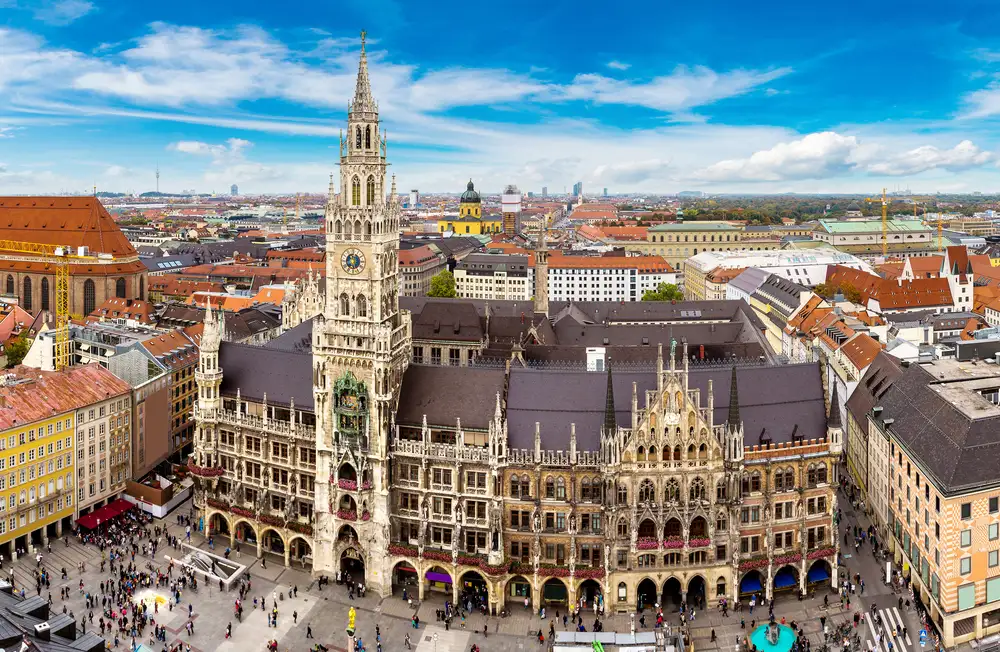
Munich
Arriving in Munich, you would be forgiven for thinking you were on the set of a movie about old Bavaria. At the Old Town beer halls, barmaids laced in dirndl dresses serve up frosty Helles lager, as oom-pah music drifts across the Marienplatz square. Men in lederhosen and checked shirts merrily give toasts as they knock glasses, or steins, as they’re known here. They sit at tables laden with wurst sausage and giant pretzels oozing with herby butter. This is Germany’s Germany, a place where folk traditions never stopped, and the revelry doesn’t either. Even when it isn’t Oktoberfest, the town’s notorious beer-drinking celebration, Munich is always happy to show you a good time. Simply cast your eyes around the lavish, gilded banquet hall at the Munich Residenz, the 13th-century Wittelsbach palace. You’ll see Munich has been impressing guests for centuries. Or, swing by the BMW Museum and check out the classic German cars. They even let you sit inside to test out the new models. At the city’s English Gardens, surfers ride waves on one of the park’s rivers. Munich is filled to the brim with this kind of pure-hearted German fun.

Learn About Munich
Build Munich Trip

Dresden
Nearly every wall and rooftop in Dresden seems to be finished with a flourish. Defined by its ornamental baroque architecture, a power statement of Saxon royalty, Dresden is made all the more miraculous considering the city was leveled by firebombing in WWII. After the war, the city was reconstructed, brick by painstaking brick. Even under East German-Soviet rule, which usually eschewed frivolous design, buildings like the Semper Opera House were pieced back to their former glory. Restoration of the majestic Zwinger Palace and bell domed Church of Our Lady slowly followed, with the Frauenkirche only fully repaired in 2005. Arguably there is no other city in Europe that cherishes its hard-won architecture as much as Dresden. Although it is a compact city, so many of its buildings will stop you in your tracks that architecture fans will easily lose a whole day in the Old Town area. Especially during the winter months, Dresden sparkles with a joyous, uplifting ambiance. The city is recognized as having the best-ever Christmas market in all of Europe. Between the twinkling lights, the scent of hot wine and gingerbread, and the towering Christmas tree, it’s worth going out of your way to see Dresden at this time of year.

Learn About Dresden
Build Dresden Trip
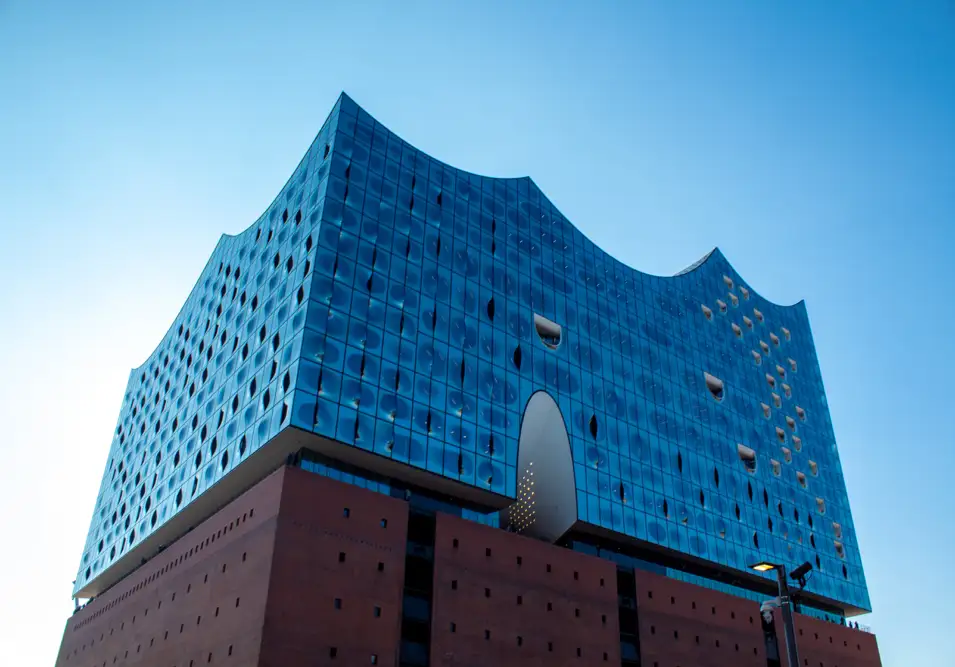
Hamburg
Compared to other German cities, Hamburg has a moody, nautical charisma all of its own. Despite being battered throughout history by floods, fires, and bombs, Hamburg has always held its head up high. Resilience is in the air in Hamburg, along with the briny smell of the North Sea. In recent years Hamburg has garnered a reputation for commerce and nightlife. Frequent travelers whisper that Hamburg is Germany’s ‘undiscovered’ city, the place to go for a little business and a lot of fun. Known as Germany’s ‘gateway to the world’, ships dock in Hamburg as they haul cargo up and down the Elbe River. The city thrives as Germany’s primary seaport and has been a center of trade since the middle ages. Its affluence shows in the 19th-century brick warehouses, flourishing restaurant scene, and recently constructed Elbphilharmonie concert hall, which floats majestically in the harbor, part ship and part island. Hamburg is a city for those who like to live large - in a cultured, German kind of way. Attend a performance at the orchestra, cruise on a boat around the Außenalster Lake, or have a night on the Reeperbahn, the Vegas-like strip where the Beatles once performed. Whatever you do in the city, Hamburg will make you look twice and see Germany from a totally different point of view.

Learn About Hamburg
Build Hamburg Trip
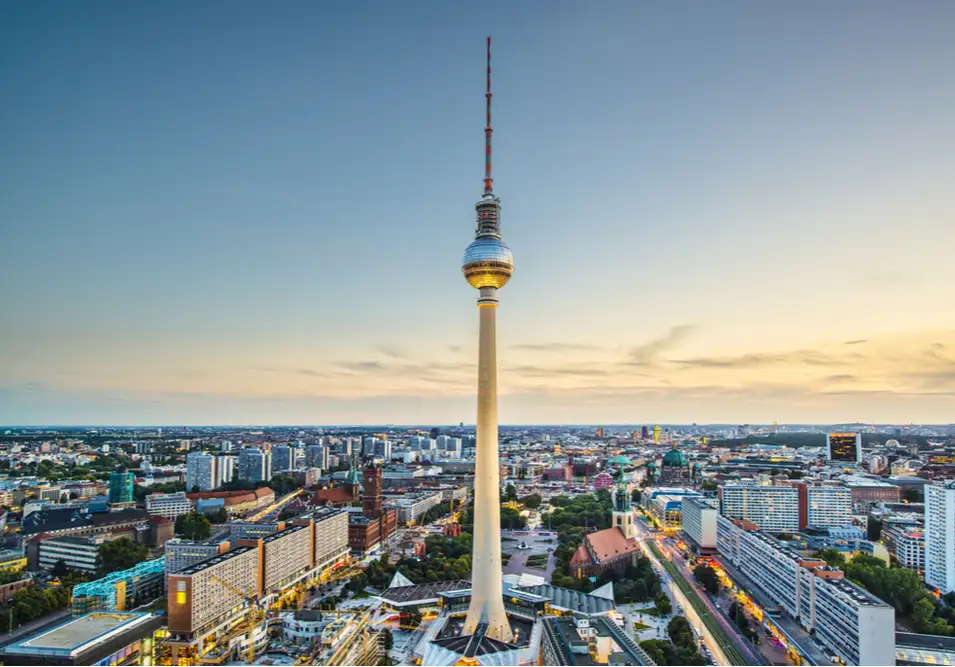
Berlin
Since the fall of its notorious wall, Berlin’s unification has seen it go from strength to strength. No wonder the city feels like it hasn’t stopped partying since the 1990s. There is so much to celebrate here. Fueled by the robust economy, a thriving tech scene, and straight-up German bonhomie, when you step into Berlin you’ll soon be caught up in its spirit. For all this gusto, Berlin hasn’t forgotten its troubled past. A visit to Berlin is to bear witness to history. Portions of the wall remain intact, and the city’s Jewish Museum offers a detailed, emotional examination of the Holocaust. Inside the reconstructed Reichstag, every attempt has been made to preserve the parliament’s beleaguered history. The buildings' glass dome addition feels less like a triumphal crown and more like a freshly healed battle scar. Days in Berlin are easily spent wandering from a cafe to the cultural institutions on Museum Island, or over to the Charlottenburg Palace. By night, crowds wander through the booming bars and nightclubs or gaze upon the floodlit Brandenburg Gate and Victory Column monuments. An international city that can offer something to everyone, Berlin is an unmissable stop on your German journey.

Learn About Berlin
Build Berlin Trip
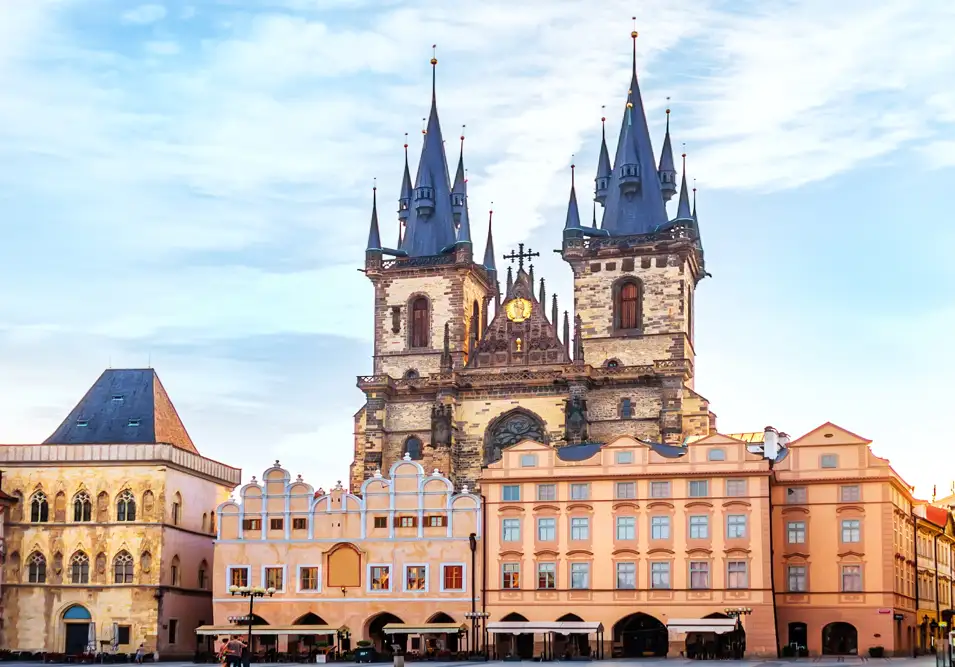
Prague
The city of Prague is indisputably the gem of Central Europe. Full of history, culture, and classic Czech pubs around every corner, Prague is teeming with nooks and crannies just waiting to be discovered. The narrow cobblestone streets and warm red rooftops give the city a homey feel, while the well-preserved medieval architecture transports you back in time. Walking across the Charles Bridge with the view of the Prague Castle will make you feel like you’re living in a fairytale, and you might as well be. As an up-and-coming destination, Prague is a perfect mix of classic and modern. New trendy cafes and bistros are always popping up, and you can always find a group of lively locals chowing down on goulash and quaffing pivo (the best beer in Europe!) at traditional Czech restaurants across the city. The clash of modernity and tradition, preservation and innovation, gives this city a mysterious air that you won’t soon forget.

Learn About Prague
Build Prague Trip
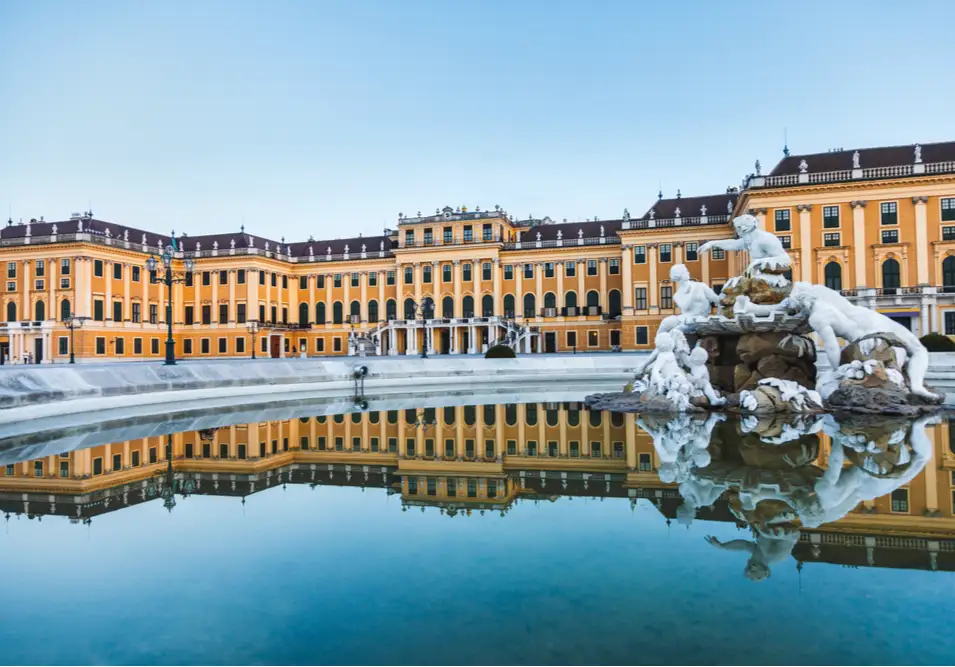
Vienna
Artistic and musical, historical and elegant, Vienna is the definition of class. The seat of the Habsburg monarchy for over six centuries, it's no wonder this city is still fit for royalty. Baroque buildings and imperial palaces dominate the cityscape, while locals stride gracefully through the streets, likely on their way to a classical music concert or art exhibition. Visitors from all over the world flock to Schonbrunn Palace, historical museums, and local eateries for authentic Viennese schnitzel. Vienna is also home to world-class wining and dining. Famous dishes include Wiener schnitzel, Tafelspitz (prime boiled beef), and apfelstrudel (apple strudel), all of which pair well with a glass of fine Austrian wine. No matter how long you spend in Vienna, you'll leave with a new appreciation for the finer things in life.

Learn About Vienna
Build Vienna Trip

Munich
Arriving in Munich, you would be forgiven for thinking you were on the set of a movie about old Bavaria. At the Old Town beer halls, barmaids laced in dirndl dresses serve up frosty Helles lager, as oom-pah music drifts across the Marienplatz square. Men in lederhosen and checked shirts merrily give toasts as they knock glasses, or steins, as they’re known here. They sit at tables laden with wurst sausage and giant pretzels oozing with herby butter. This is Germany’s Germany, a place where folk traditions never stopped, and the revelry doesn’t either. Even when it isn’t Oktoberfest, the town’s notorious beer-drinking celebration, Munich is always happy to show you a good time. Simply cast your eyes around the lavish, gilded banquet hall at the Munich Residenz, the 13th-century Wittelsbach palace. You’ll see Munich has been impressing guests for centuries. Or, swing by the BMW Museum and check out the classic German cars. They even let you sit inside to test out the new models. At the city’s English Gardens, surfers ride waves on one of the park’s rivers. Munich is filled to the brim with this kind of pure-hearted German fun.

Learn About Munich
Build Munich Trip

Dresden
Nearly every wall and rooftop in Dresden seems to be finished with a flourish. Defined by its ornamental baroque architecture, a power statement of Saxon royalty, Dresden is made all the more miraculous considering the city was leveled by firebombing in WWII. After the war, the city was reconstructed, brick by painstaking brick. Even under East German-Soviet rule, which usually eschewed frivolous design, buildings like the Semper Opera House were pieced back to their former glory. Restoration of the majestic Zwinger Palace and bell domed Church of Our Lady slowly followed, with the Frauenkirche only fully repaired in 2005. Arguably there is no other city in Europe that cherishes its hard-won architecture as much as Dresden. Although it is a compact city, so many of its buildings will stop you in your tracks that architecture fans will easily lose a whole day in the Old Town area. Especially during the winter months, Dresden sparkles with a joyous, uplifting ambiance. The city is recognized as having the best-ever Christmas market in all of Europe. Between the twinkling lights, the scent of hot wine and gingerbread, and the towering Christmas tree, it’s worth going out of your way to see Dresden at this time of year.

Learn About Dresden
Build Dresden Trip

Hamburg
Compared to other German cities, Hamburg has a moody, nautical charisma all of its own. Despite being battered throughout history by floods, fires, and bombs, Hamburg has always held its head up high. Resilience is in the air in Hamburg, along with the briny smell of the North Sea. In recent years Hamburg has garnered a reputation for commerce and nightlife. Frequent travelers whisper that Hamburg is Germany’s ‘undiscovered’ city, the place to go for a little business and a lot of fun. Known as Germany’s ‘gateway to the world’, ships dock in Hamburg as they haul cargo up and down the Elbe River. The city thrives as Germany’s primary seaport and has been a center of trade since the middle ages. Its affluence shows in the 19th-century brick warehouses, flourishing restaurant scene, and recently constructed Elbphilharmonie concert hall, which floats majestically in the harbor, part ship and part island. Hamburg is a city for those who like to live large - in a cultured, German kind of way. Attend a performance at the orchestra, cruise on a boat around the Außenalster Lake, or have a night on the Reeperbahn, the Vegas-like strip where the Beatles once performed. Whatever you do in the city, Hamburg will make you look twice and see Germany from a totally different point of view.

Learn About Hamburg
Build Hamburg Trip

Berlin
Since the fall of its notorious wall, Berlin’s unification has seen it go from strength to strength. No wonder the city feels like it hasn’t stopped partying since the 1990s. There is so much to celebrate here. Fueled by the robust economy, a thriving tech scene, and straight-up German bonhomie, when you step into Berlin you’ll soon be caught up in its spirit. For all this gusto, Berlin hasn’t forgotten its troubled past. A visit to Berlin is to bear witness to history. Portions of the wall remain intact, and the city’s Jewish Museum offers a detailed, emotional examination of the Holocaust. Inside the reconstructed Reichstag, every attempt has been made to preserve the parliament’s beleaguered history. The buildings' glass dome addition feels less like a triumphal crown and more like a freshly healed battle scar. Days in Berlin are easily spent wandering from a cafe to the cultural institutions on Museum Island, or over to the Charlottenburg Palace. By night, crowds wander through the booming bars and nightclubs or gaze upon the floodlit Brandenburg Gate and Victory Column monuments. An international city that can offer something to everyone, Berlin is an unmissable stop on your German journey.

Learn About Berlin
Build Berlin Trip

Prague
The city of Prague is indisputably the gem of Central Europe. Full of history, culture, and classic Czech pubs around every corner, Prague is teeming with nooks and crannies just waiting to be discovered. The narrow cobblestone streets and warm red rooftops give the city a homey feel, while the well-preserved medieval architecture transports you back in time. Walking across the Charles Bridge with the view of the Prague Castle will make you feel like you’re living in a fairytale, and you might as well be. As an up-and-coming destination, Prague is a perfect mix of classic and modern. New trendy cafes and bistros are always popping up, and you can always find a group of lively locals chowing down on goulash and quaffing pivo (the best beer in Europe!) at traditional Czech restaurants across the city. The clash of modernity and tradition, preservation and innovation, gives this city a mysterious air that you won’t soon forget.

Learn About Prague
Build Prague Trip

Vienna
Artistic and musical, historical and elegant, Vienna is the definition of class. The seat of the Habsburg monarchy for over six centuries, it's no wonder this city is still fit for royalty. Baroque buildings and imperial palaces dominate the cityscape, while locals stride gracefully through the streets, likely on their way to a classical music concert or art exhibition. Visitors from all over the world flock to Schonbrunn Palace, historical museums, and local eateries for authentic Viennese schnitzel. Vienna is also home to world-class wining and dining. Famous dishes include Wiener schnitzel, Tafelspitz (prime boiled beef), and apfelstrudel (apple strudel), all of which pair well with a glass of fine Austrian wine. No matter how long you spend in Vienna, you'll leave with a new appreciation for the finer things in life.

Learn About Vienna
Build Vienna Trip
prev
next


 Map of Your Itinerary Route
Map of Your Itinerary Route
Zoom In to the cities to see your itinerary in more detail


 4.8
4.8 






